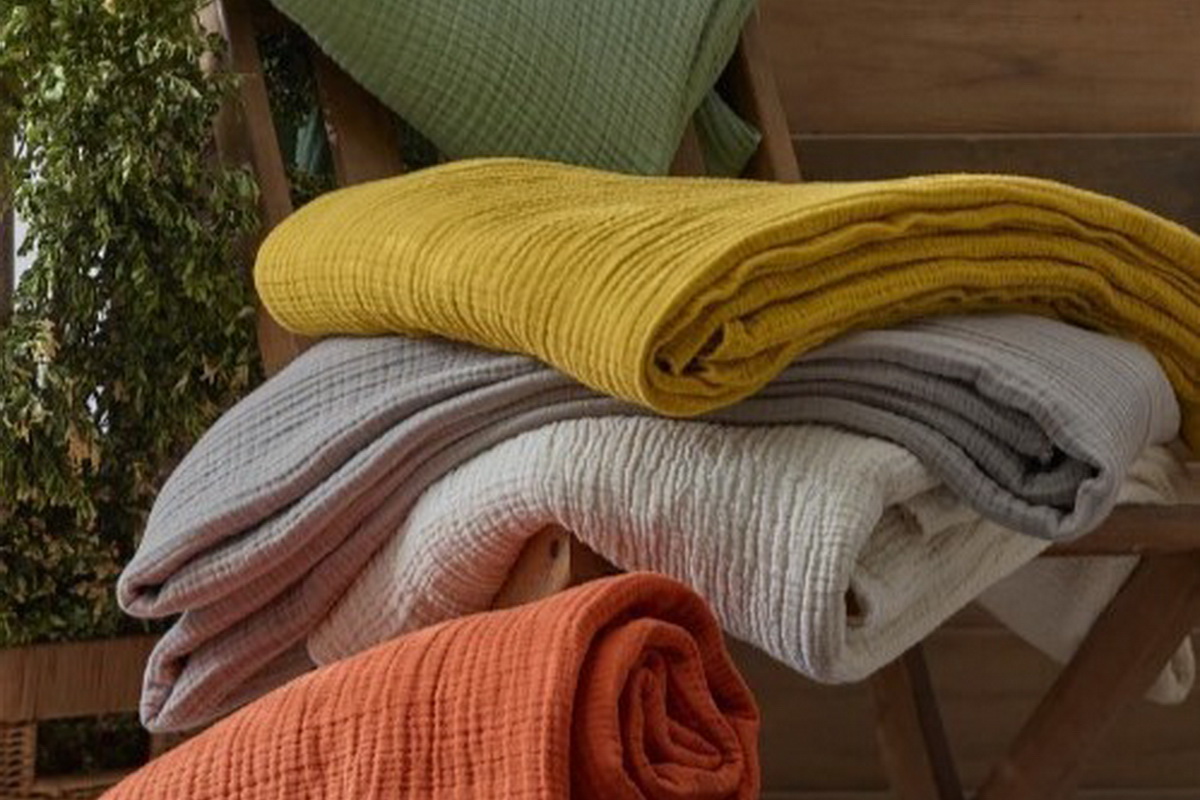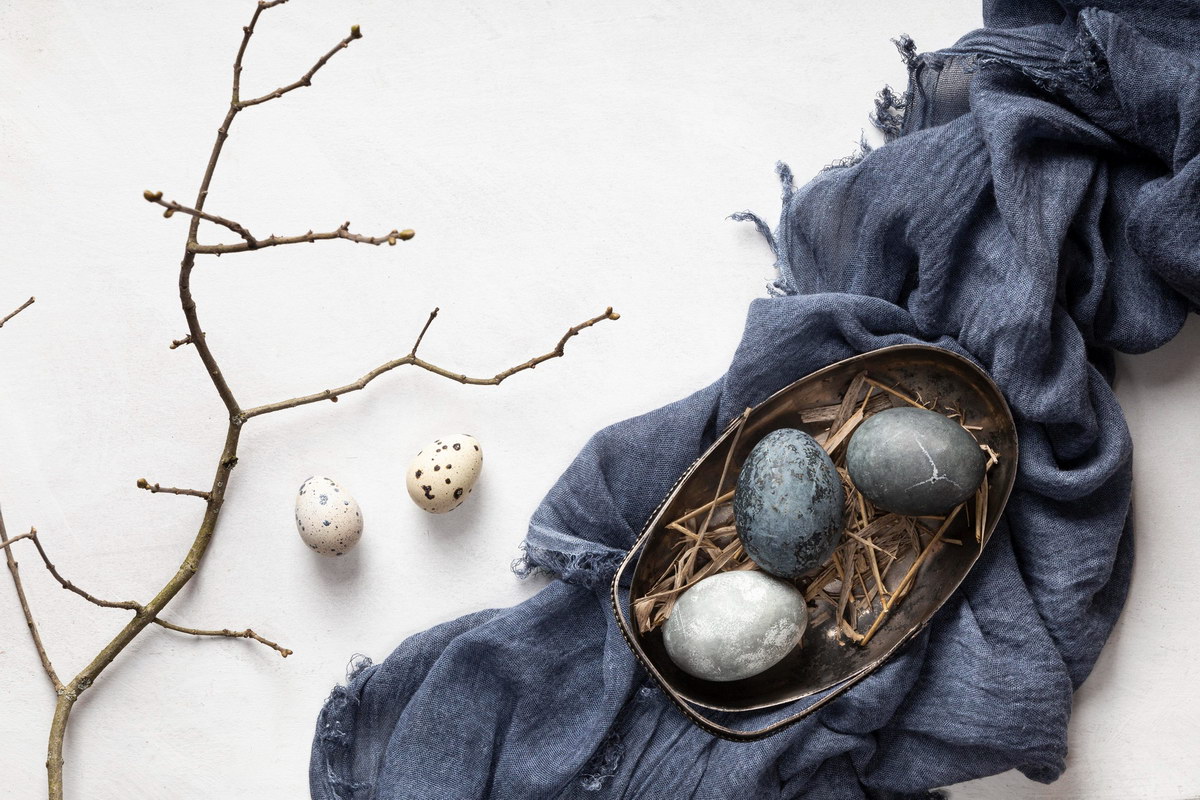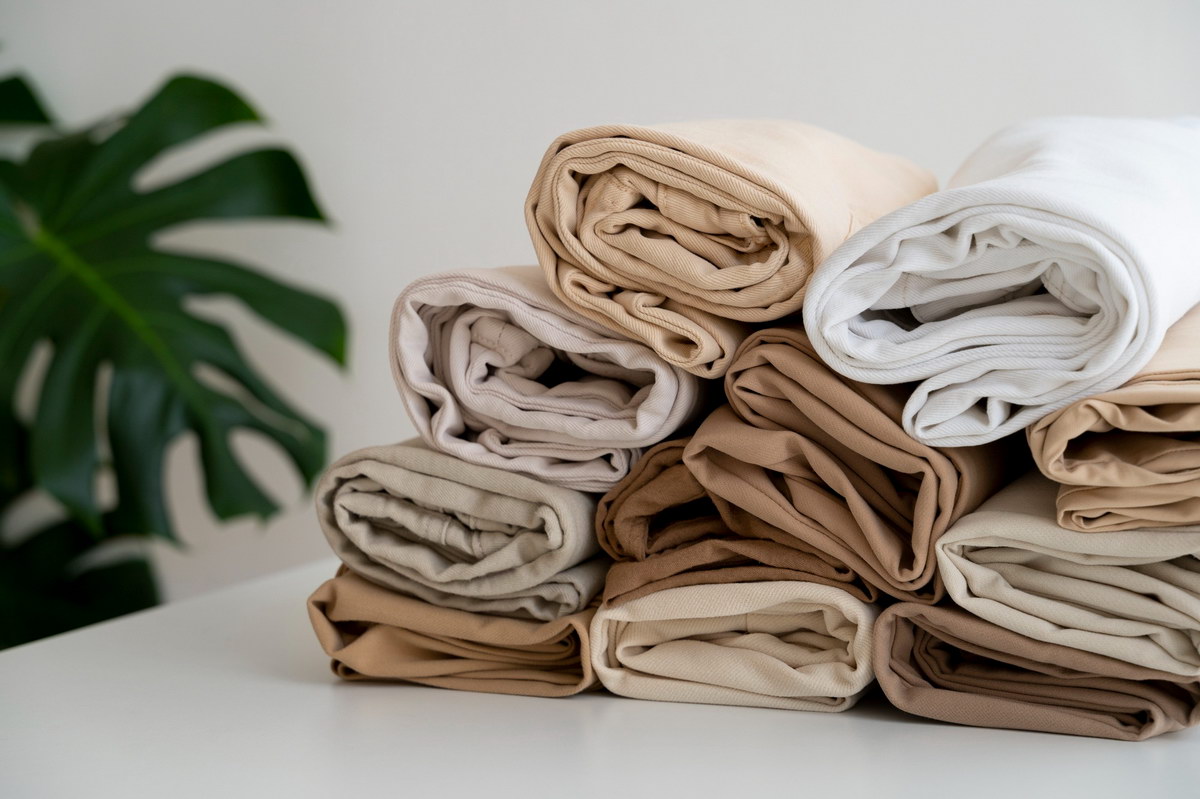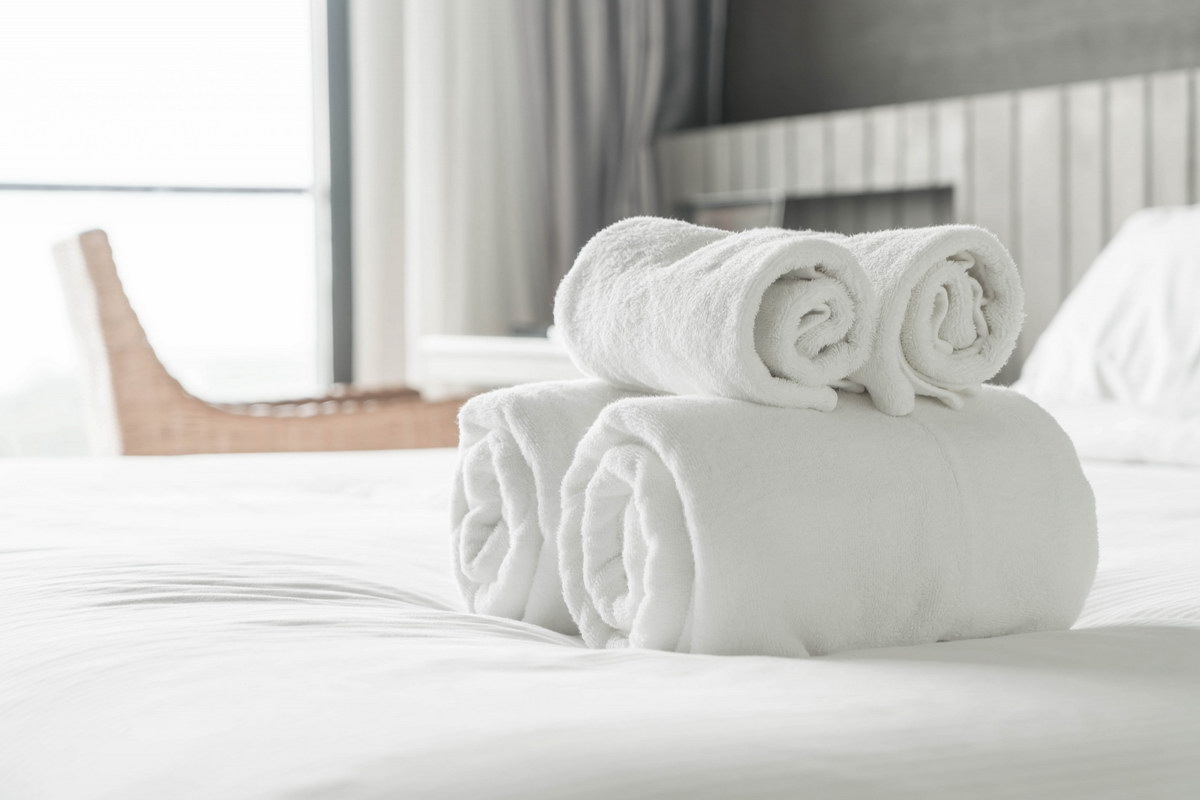In this article, we will cover all aspects of the question “What is muslin fabric like?” and provide you with a comprehensive guide to the properties, uses and quality of muslin fabric. Muslin fabric is a popular fabric type that is frequently used in fashion, baby care products and home decoration due to its lightweight and breathable structure. Whether you are a professional designer or a home sewer and crafter, here is everything you need to know about muslin fabric!

What Is Muslin Fabric Like? – Detailed Guide
What is Muslin Fabric?
Muslin fabric is a light and soft fabric made from natural fibres such as cotton yarn or bamboo yarn. Muslin fabric, which originated in the Middle East, has maintained its popularity from the past to the present. This fabric, which attracts attention with its purity and naturalness, usually has a loosely woven structure and has the ability to keep cool in hot weather thanks to its air permeability.
Muslin fabric offers different options from white to colourful and patterned varieties. In addition, it gets softer as it is washed and dried, which allows it to be used in diapers, baby covers, baby clothes, blouses, shawls, covers, towels and many other areas.
Features of Muslin Fabric
The properties of muslin fabric are important factors that distinguish it from other types of fabric:
- Light and Breathable: Muslin fabric provides comfort in clothes and baby care products thanks to its light and fine texture. Thanks to its breathable structure, it offers a fresh use even in hot weather.
- Softness: The soft texture of muslin fabric provides a comfortable use without damaging sensitive baby skin. It also offers a comfortable wearing experience for adults.
- Water Absorbency: Muslin fabric has the ability to absorb water quickly. It is frequently preferred in products that require water absorbency such as nappies and towels.
- Durability: Muslin fabric made of natural fibres has a strong and durable structure. It maintains its quality even when washed.
- Colour and Pattern Variety: Muslin fabric can be found in different colours and patterns. In this way, it can be used in various designs and products suitable for different styles can be created.

Uses of Muslin Fabric
Muslin fabric is preferred in various areas thanks to its versatile and useful features:
- Baby Care Products: Muslin fabric is frequently used in baby care products such as baby nappies, baby covers, baby bathrobes. Its soft texture is ideal for babies’ sensitive skin.
- Clothes: Thanks to its light and thin structure, blouses, dresses and shawls preferred in summer can be produced from muslin fabric.
- Home Decoration: Muslin fabric can be used as a stylish and natural option in home decoration such as curtains, tablecloths, pillowcases and covers.
- Towels and Napkins: Muslin fabric is preferred for kitchen towels and napkins thanks to its water absorbency.
- Beachwear: Beach dresses and pareos can be produced with muslin fabric to make them light and cool.
Understanding the Quality of Muslin Fabric
Quality muslin fabrics are those that have the appropriate characteristics and are carefully woven. To understand the quality of muslin fabric, it is important to pay attention to the following factors:
- Fibre Type: Muslin fabrics made from natural fibres tend to be of better quality and durable than synthetic fibres. Cotton and bamboo yarns are the most preferred natural fibres.
- Weaving Density: Muslin fabrics with higher weaving density tend to be more durable and long-lasting.
- Colour Fastness: Quality muslin fabrics can maintain their colours for a long time after washing and use.
- Free Chemical Free: Organic muslin fabrics are a safer and healthier option as they do not contain harmful chemicals.
- Brand and Manufacturer Reliability: Muslin fabrics of reliable and well-known brands are more likely to be of high quality and reliable.
History of Muslin Fabric
The origin of muslin fabric dates back to the Middle East. India and Bangladesh are famous for the production and trade of traditional muslin fabric. Since ancient times, muslin fabrics have been in demand on trade routes from Asia to Europe.
The name of muslin fabric comes from the Arabic word “muslin”. This type of fabric was introduced to the West by Muslim merchants in the Middle East and attracted great interest in Europe. Thanks to its light and durable structure, muslin fabric gained an important place in Western fashion, especially in the 18th century.
Today, muslin fabric continues to be a popular choice worldwide. With its natural and healthy structure, various usage areas and stylish appearance, it is frequently seen in the fashion world and daily life.
The Importance of Muslin Fabric for Babies
In baby care, muslin fabric is a material that parents often prefer, and there are several important reasons for this:
- Hypoallergenic and Healthy: Muslin fabric provides a comfortable use without damaging the baby’s sensitive skin. Its hypoallergenic feature reduces the risk of allergies and helps the baby sleep comfortably.
- Absorbent and Breathable: Choosing muslin fabric for nappies and covers keeps the baby’s skin dry and allows it to breathe comfortably thanks to its fast water absorption and air permeability.
- Softness and Comfort: The soft texture of muslin fabric provides soft contact with the baby’s delicate skin and soothes it.
- Variety: Muslin fabric can be used in various products such as baby bathrobes, baby clothes and baby blankets as well as baby nappies and covers.
Why is Muslin Fabric Suitable for Babies?
Muslin fabric for babies is a preferred option considering the health and comfort of the baby. So, what are the features that distinguish muslin fabric from other types of fabrics for babies?
- Hypoallergenic Structure: Babies’ skin is sensitive and prone to allergic reactions. Since muslin fabric is made of natural fibres, it minimises the risk of allergies and does not irritate the baby’s skin.
- Water Absorbency: Since babies need to be changed constantly, especially during the nappy period, a fabric with high water absorbency is important. Muslin fabric absorbs water quickly and keeps the baby’s skin dry.
- Breathability: Babies’ skin tends to sweat as sensitive as it is sensitive. Thanks to its breathable structure, muslin fabric helps the baby’s skin to breathe and stay cool.
- Softness: Since babies’ skin is sensitive, a soft textured fabric is preferred. Muslin fabric provides a soft contact to the skin of babies and offers a comfortable use.

How to Care Muslin Fabric?
Proper care is important for the muslin fabric to be long-lasting and maintain its quality. You can use muslin fabric for many years by washing and preserving it correctly.
- Washing in Cold Water: When machine washing muslin fabric, it is best to wash it at as low a temperature as possible and preferably in cold water. High temperatures can damage the fabric and cause the colour to fade.
- Using Delicate Detergents: It is important to use gentle detergents to preserve the soft texture of muslin fabric. Choose detergents that do not contain perfumes and dyes and are suitable for babies.
- Avoid Bleach: Muslin fabric can be damaged by harsh chemicals such as bleach. Instead of using bleach, try to remove stains naturally.
- Don’t Use Fabric Softener: Muslin fabric is already soft thanks to its soft texture. Using softeners can reduce the breathability and water absorbency of the fabric.
- Air Drying: When drying muslin fabrics, it is better to let them breathe by hanging them naturally if possible. When using a tumble dryer, choose a low heat setting.
- Reduce Ironing: Muslin fabrics generally do not require ironing, but if you need to iron, iron at low heat and turn inside out.
Frequently Asked Questions About Muslin Fabric (FAQs)
Q: Why is muslin fabric preferred in baby care products?
A: Muslin fabric is preferred in products such as diapers, baby covers and bathrobes thanks to its water absorbency and breathable structure, offering a comfortable use without damaging the sensitive skin of babies.
Q: How to clean and maintain muslin fabric?
A: For cleaning muslin fabric, it is important to wash it at low temperature and with sensitive detergents. If possible, natural drying method should be preferred and harsh chemicals such as bleach should be avoided.
Q: What craft projects can be made with muslin fabric?
A: You can make many creative projects with muslin fabric such as nappies, bathrobes, clothes, home decor items, beach dresses and pareos.
Q: How can I tell the quality of muslin fabric?
A: To understand the quality of muslin fabric, it is important to pay attention to the fibre type, weaving density, colour fastness and manufacturer reliability.
Q: How to make baby nappies with muslin fabric?
A: To make handmade nappies with muslin fabric, prepare the fabric cut to the appropriate size by knotting the edges with a serged or zigzag stitch. Add elastic to the nappy for ease of use and wash it several times to soften it.
Q: Where can I buy muslin fabric?
A: Muslin fabric is available from fabric shops, online platforms or craft supply stores.
Conclusion
Muslin fabric is an important type of fabric used in many areas from the fashion world to baby care products thanks to its natural and healthy structure, lightness and comfort. It draws attention with its water absorbency and breathability without damaging the sensitive skin of babies. With proper care and use, you can enjoy your muslin fabrics for many years and utilise them in creative projects.
Remember, the use of natural and sustainable options is an important step for both our health and the environment. By choosing muslin fabric, you can contribute to a natural lifestyle and pamper yourself and your loved ones healthily and comfortably.








